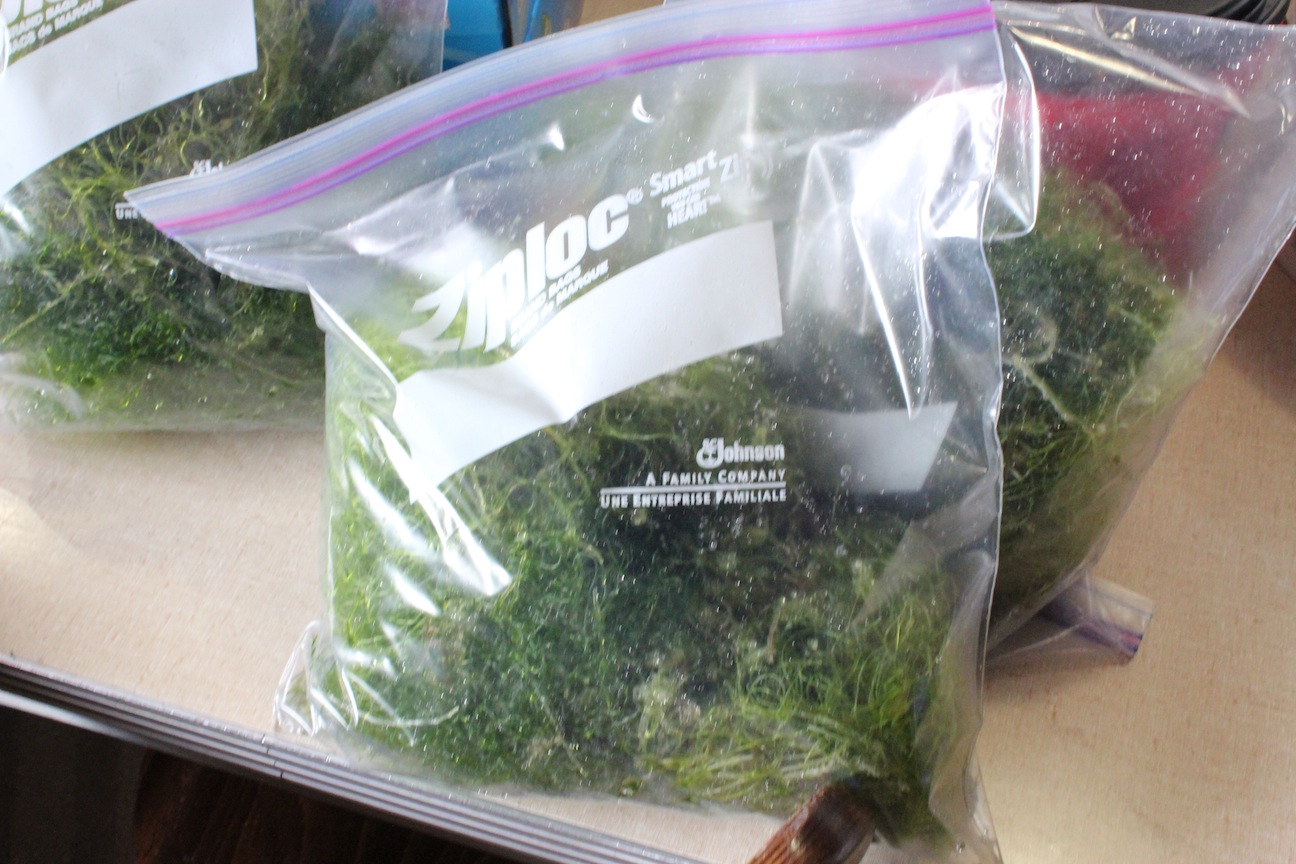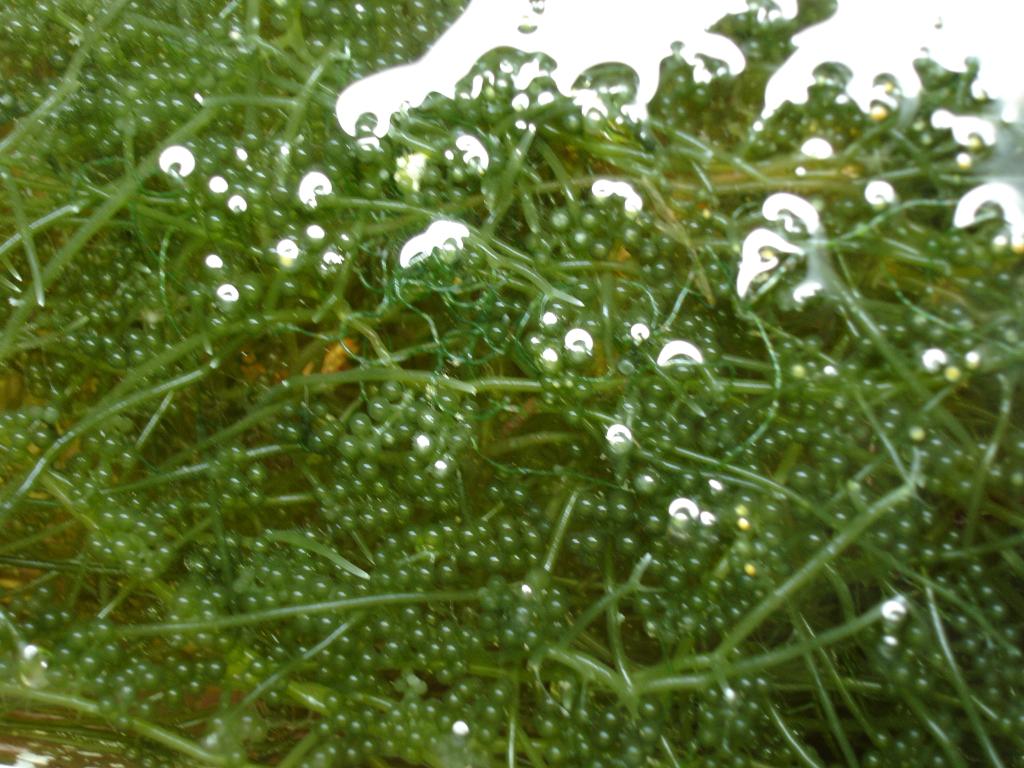A refugium with macroalgae is almost a must in our controlled and complex marine biological systems. Along with skimmers and various types of media reactors, refugiums help pull unused nutrients out of the water column as the desirable algae grows. These nutrients are known to break down into ammonia, nitrite, nitrate and phosphate, which can all cause fish and coral health issues or fuel algae growth. Refugiums also allow different types of microorganisms to grow and reproduce. This safe habitat is required because in the tank many of these tiny invertebrates are constantly being consumed by fish or other inverts. The refugium helps isolate the perfect environment for these organisms to thrive and grow in numbers. Eventually, the benficial inverts will find their way into our display tanks, creating and ongoing cycle of a natural source of food; not to mention these critters make up a rather valuable portion of our clean up crews. With all of the different types of algae available to aquarium keepers for refugium purposes, it’s not always easy to pick out with will have the most benefits to your system. This article will not cover all the types of macroalgae, but we will discuss a few of the common choices, along with a couple characteristics of each. And just for one we’ll cover one type that doesn’t fit the criteria of the rest, but it is a very interesting species.
Chaetomorpha, or commonly known as “Chaeto”, is probably the choice of most reefers. This algae is almost spaghetti like and it grows in a ball-like shape that expands fairly quickly. One of the most importantly quality of Chaeto is that it does not “go sexual” like other macro algae. When an algae goes sexual it releases spores into the aquarium and then dies, essentially releasing most of the nutrients it pulled out the water column back into the water. This is obviously extremely harmful to tank inhabitants. Even though Chaetomorpha is probably the perfect choice for any reefer, I would not recommend using it directly in the aquarium. This algae floats around and can get caught on rock, power-heads, and corals. This macro algae is actually quite inexpensive, running roughly ten dollars for a reasonable handful or even free from generous aquarists.
Another popular choice is Caulerpa. There are many different kinds of this macroalgae, such as fern, grape, and flat blade varieties to name just a few. However, due to the overabundance of certain types in the hobby, we will focus mainly on grape and fern. Caulerpa is widely used because of its extremely fast growth. It grows on the rock work and serves as a great place to harbor beneficial inverts. The big downside though is that this algae does go sexual from time to time, and the results are not pretty. Further adding to the negative, this algae is also grows aggressively, taking over other algae very quickly. If any small clipping of this algae finds its way into your aquarium it will attach itself to the rock and quickly grow with help from the intense lighting in our aquarium. While Caulerpa is a popular choice among reefers, I would recommend caution with this algae. If you plan on making your refugium a “display refugium”, I would stay away from this particular species, it’s aggressive growth does not allow other algae to grow and flourish at their fullest. As far as prices go, they pretty much mimic those of Chaetomorpha. If you can’t get it for free, the going price is roughly $10 per reasonable amount.
Halymenia sp., also known as “Dragon’s Tongue”, is becoming a popular choice not only for refugiums but for aquariums with algae in the displays. This algae is delicate, looks like gelatin, and portrays a mostly red blade with bright orange edges. It is very appealing to the eye, but it is a slow grower. It does export nutrients but because of its slow growth. We have spotted this algae priced at roughly twenty dollars an inch.
Halimeda opuntia, also known as “Money plant”, is your oddball of algae. This is a calcerous type of algae, meaning that this specific species benefits from calcium in the water. In return, when Halimeda dies it releases calcium back into the water. This algae is an encrusting algae, it encrust both horizontally and laterally. It is not good for nutrient export because it is a slow grower but it is benificial to an extent. Many algae display aquariums do use this algae because its growth is relatively slow it is easily controlled. Halimeda isn’t an algae that most aquarium keepers have, and because of this it’s hard to get your hands on a free batch of it. It is sold by the cluster and has been spotted for about $10 for a six inch cluster.
When deciding what macroalge to utilize in our refugiums, it is important to keep in mind what our goals are. In a mainly SPS dominated aquarium, a mixture of Chaetomorpha and Halimeda might be benifical but if you are attempting to put together an algae display, the brightly colored Halymenia would be a better choice. Don’t forget that some types of macroalgae are more likely to go asexual than others, and some grow faster than others. Reserach is key to any succesfull to any marine or reef aquarium.









